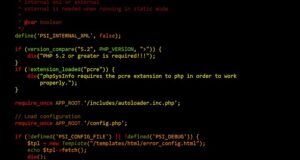Table of Contents
Are there any risks associated with ReactJS? Is ReactJS really as helpful as some developers claim or are there any hidden pitfalls? How can developers best maximize the benefits of ReactJS while avoiding the challenges? These are the questions this article will explore in detail.
The main problem with ReactJS is that, while truly powerful, it can also be complicated and time-consuming to learn and master. As reported in Forbes Magazine in 2020, ReactJS is becoming an increasingly popular web development tool due to its ability to create complex user interfaces. However, developers are increasingly struggling to define the right strategy to use ReactJS in their digital projects. Due to the nuances of ReactJS, decision-makers must ensure that their teams are well-equipped and have the right resources to make the most of their expertise.
In this article, you will learn about the risks associated with ReactJS and how to avoid those pitfalls. Further, we will explore the best practices that developers should use when working with ReactJS and discuss some of the benefits to using the tool. Finally, we’ll explain some shortcuts and tips that can help developers speed up the process of mastering ReactJS. With this information in mind, developers of all skill levels should gain a better understanding of how to use ReactJS to create powerful, engaging applications.
Definitions
ReactJS is a JavaScript library created by Facebook that allows developers to easily create user interfaces for their projects. It provides a modern approach to developing web applications by using components instead of templates. ReactJS also helps developers manage data flow and states, making it easier to create complex applications.
Wrong things in ReactJS refer to any aspects of coding that can lead to errors, incorrect behavior, or other problems. Common wrong things can include incorrect syntax, incorrect structure, or the use of components or states that are not suitable for a given application. Additionally, ReactJS developers may struggle to update their applications due to changes in the component landscape.
Debugging ReactJS is the process of fixing errors or finding where errors are present. Developers usually use tools to help track down errors and identify and fix code. Debugging can also involve finding poor performance issues and concerns with code structure or coding patterns. Poorly written code can be difficult to debug, and sometimes it can be difficult to replicate the problems.
Heading 1: Common Mistakes Developers Make When Working With ReactJS
Paragraph 1
When building React applications, developers may fail to consider some important elements of the technology, leading to a range of issues. While even experienced developers may make avoidable mistakes, failing to recognize common pitfalls can lead to major roadblocks. Common mistakes that developers make when working with ReactJS include over-optimizing code, designing non-scalable systems, and not understanding the framework’s structure.
Over-Optimizing Code
Paragraph 2
One of the most common mistakes developers make when working with ReactJS is over-optimizing code, which is an issue that affects the scalability of the system. This occurs when developers write code that is too complex or do not bother to break apart components when appropriate. This not only causes performance issues, but can also make the code difficult to maintain. Additionally, trying to optimize code will often detract from other elements of the application, such as reliability and usability.
Designing Non-Scalable Systems
Paragraph 3
Another common mistake that developers make is designing non-scalable systems, which limits the application’s growth potential as user base numbers increase. Without properly designed architectures, developers may struggle with components that are not designed for scaling, or fail to account for the effect of changes on the performance of the system. Additionally, a lack of scalability in an application can lead to performance issues and potential security risks.
Not Understanding Framework’s Structure
Paragraph 4
Lastly, another mistake that developers oftentimes make when working with ReactJS is not understanding the framework’s structure. React JS uses the JSX syntactic extension of JavaScript, which requires developers to become accustomed to the React Class structure in order to write clean and efficient code. Without a good understanding of the principles behind React components, developers may experience difficulty debugging and component reusability may be impeded.
List
To avoid common pitfalls when developing React applications, developers should:
- Refrain from over-optimizing code
- Plan for scalability when designing the system
- Familiarize themselves with the structure of the framework
Heading 2: Challenges with Integrating ReactJS With Existing Applications
Integrating ReactJS with existing applications presents a unique set of challenges compared to developing a traditional application from scratch. When approaching a project that uses two distinct frameworks, there are a few vital considerations to keep in mind in order to ensure a successful outcome.
Compatibility and Interoperability
Ensuring that the systems in question are interoperable and compatible with one another is the first and most important task. In most cases, integrating two sets of code requires a careful examination of both endpoints for potential conflicts or incompatibilities. If the integration is between two entirely different languages, then it becomes necessary to write a bridge between the two. It is also important to make sure the frameworks are consistent, as even the smallest difference between the two can lead to coding errors.
Stability
The next challenge is maintaining the stability and performance of the application after integration. Before integrating, the performance and speed of the application is quite different from its post-integrated state. To ensure that the performance remains the same or even increases, a comprehensive integration testing plan must be implemented. This can be done either manual, automated, or both.
Security
Lastly, it is vital to consider security measures when integrating ReactJS and other frameworks. As frameworks are interconnected, this makes them more vulnerable to hackers and other malicious entities. Careful consideration of secure methods for user authentication and data encryption must be planned prior to integration in order to protect the integrity of the application.
By taking the time to properly plan and consider potential integration challenges, the process of combining two frameworks and applications should be successful and hassle-free. With the right team, skill set, and roadmap, integration of ReactJS with existing applications is made much easier.
Heading 3: Issues With Staying Up-to-Date When Working With ReactJS
React is a modern JavaScript library that is widely used to develop interactive user interfaces. However, it is a fast-evolving language and keeping up with the latest version of React can be a challenge. Developers must be wary of three major issues when staying up-to-date with React.
Learning Curve
One of the biggest challenges of using React is that it has a steep learning curve. As React continues to evolve and developers add new features and syntax, developers must be continually learning new methods and ways of doing things. As components become more complex, it can take a longer time to learn React and often requires learning other libraries like Redux. As React releases a new version, the best practices that worked in the prior version may not be compatible with newer versions.
Outdated Resources
Not only is updating the framework tedious, but also updating resources related to React like books and blogs can be difficult. Resources like tutorials, courses, or articles that were published a while ago may be outdated and may not reflect the latest versions of React. Attempting to use these outdated resources can lead to confusion and frustration, since they may not match up with the latest specifications of React.
Inconsistent Versioning
Another issue with staying up-to-date with React is inconsistent versioning. As React updates, the versioning and the way different versions are named can be confusing. As best practice it is important to keep track of the version you are working with and ensure that all implementations are using the same and most up-to-date version. Not keeping track of the version can lead to conflicts in code and unexpected errors.
In conclusion, staying up-to-date with React can be difficult due to the learning curve, inconsistencies in versioning, and outdated resources available. Developers must be cautious while learning and upskilling in React and must continuously evaluate the version of React they are using to ensure their work is correct and is compatible with the latest versions.
Conclusion
.
Overall, many of the wrong things in ReactJS stem from its rapid development. Developers must be careful to avoid the pitfalls of ReactJS’s rapid expansion and instead ensure that all mistakes are accounted for and innovations are executed properly. To that end, staying up-to- date with the latest releases and revisions of the software is time well spent.
If you’re looking to stay ahead of the curve with the newest developments in ReactJS, be sure to keep this blog bookmarked and check back frequently for updates. Additionally, consider joining an online ReactJS forum, as many members stay up to date on the latest changes and look to help newcomers to the platform.
Frequently Asked Questions:
Q: What are the risks associated with using ReactJS?
A: Due to the fact that ReactJS is a rapidly expanding platform, there is a risk of overlooking mistakes or misusing the technology in unintended ways. It is important to ensure the proper implementation of ReactJS and stay up-to-date on the software’s new releases and associated changes.
Q: How can I stay up-to-date with ReactJS?
A: Keeping this blog bookmarked and checking for updates is one way to stay on top of the latest releases and revisions. Joining an online forum in which members frequently discuss ReactJS is also recommended.
Q: What is the most important consideration when working with ReactJS?
A: When dealing with ReactJS, the most important factor is to ensure the proper implementation of the technology and to become well versed in its utilization. Doing this is necessary to prevent mistakes and misuse.
Q: What are the benefits of ReactJS?
A: ReactJS benefits the developer community in many ways. It is a powerful tool that promotes rapid development time, enabling developers to create dynamic and engaging user interfaces quickly and effectively. Additionally, ReactJS is relatively easy to learn and apply.
Q: What resources are available to learn ReactJS?
A: There are plenty of helpful resources to learn ReactJS, including blogs, tutorials, and online documentation. Additionally, ReactJS has an eager network of developers and users who can offer advice or assistance if needed.

